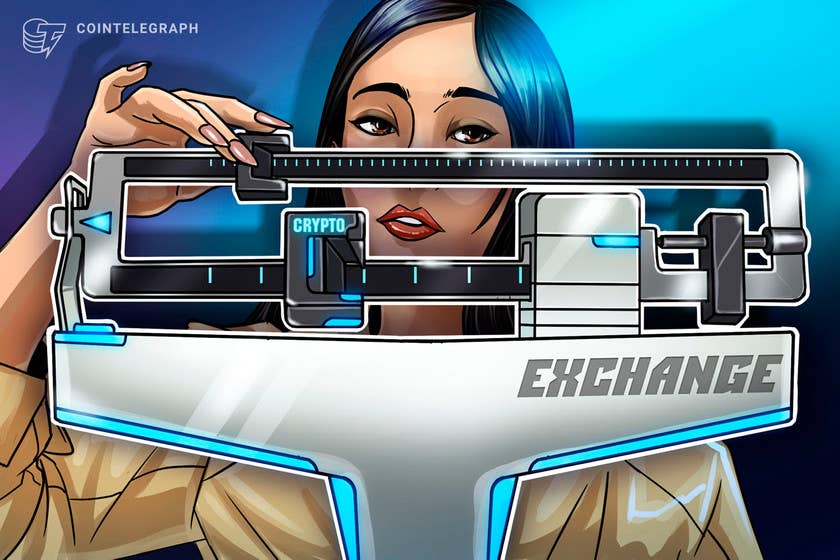The Ethereum (ETH) team is actively looking for solutions that may help scale the blockchain network, as reported by Cointelegraph on July 15. Co-founder of Ethereum Vitalik Buterin is now considering third-party blockchains that have lower commission rates for transferring information. According to him, the Bitcoin Cash (BCH) blockchain could cope well with this task. The fact is that BCH has a high data throughput — 53 kilobytes per second (KPS) compared to Ethereum’s eight KPS, which are actively used by applications, Buterin revealed.
Scalability issues force the hand
Over the years, scalability has been the Achilles’ heel of Ethereum, and the team behind the second-largest cryptocurrency has been making every effort to increase it. In the current realities, the Ethereum blockchain is supposed to handle a maximum of 25 transactions per second (TPS), while the charts show that its throughput for July has not exceeded 11 TPS, and on several occasions in recent days, it has even dropped to around seven TPS.

The situation is complicated by a record number of pending transactions per second, which has already exceeded the 600 mark. Meanwhile, somewhat smaller blockchains managed to achieve greater performance. For instance, EOS is able to process 1,200 TPS and Tron can already handle 2,000 TPS.
Transactions per second comparison between top cryptos

What about Casper?
Buterin built a whole roadmap until 2020, which should lead Ethereum to reaching similar indicators of such payment giants as Visa, which processes 24,000 operations per second. The program includes a transition from the proof-of-work (PoW) to the proof-of-stake (PoS) algorithm, network sharding, as well as the introduction of the second-layer solutions: Plasma and Raiden.
The PoS consensus algorithm is expected to make transactions cheaper and accelerate the production of new blocks, while Layer 2 solutions are supposed to significantly increase the scalability of Ethereum.
The concept of sharding is another innovation that represents a modified network architecture, with the blockchain dividing nodes into smaller independent elements called shards. The latter has its own transaction history log that handles only its own transactions, thus decreasing the loading on the network.
In an interview with CoinSpice, Buterin shared the details of two long-term schemes, which, according to him, are now being worked on by the Ethereum team and are set to help scale the network. One of them implies the use of the so-called shadow chain, whereby the computation process takes place off-chain, but state transition functions are being committed back to the mainchain after 100 blocks.
With this approach, the network is validated selectively, and the validator who confirms a block guarantees its authenticity with his/her deposit. In case he/she is mistaken, the funds are burned. Buterin called this scheme the interactive computation game approach. The diagram below explains the difference between the two approaches.

Under the second option, zk-STARKs (i.e., Zero-Knowledge Scalable Transparent ARguments of Knowledge) are being proposed, which allow for verification of the data without revealing the content to the validator. Layer 2 solutions are good for network scaling, but their development is a laborious and time-consuming process, while there exist temporary ways to increase the throughput of the Ethereum blockchain, as Buterin claims:
“In the long-term we expect that the data layer for these schemes to be Ethereum 2.0 itself. Until Ethereum 2.0 exists what you have is first of all the existing Ethereum chain but the existing Ethereum chain is already basically 100% full and it has been full for a while. And we could do marginal things to increase its scalability but it’s still relatively expensive and so there’s other strategy you could consider. To do some short-term things is basically to just use these second-tier blockchains as extra data layers.”
Buterin brings Bitcoin Cash into the discussion
Buterin explained his choice of the BCH blockchain because of its optimal throughput of 53 KB per second, which is almost seven times higher than that of Ethereum. Moreover, connecting BCH to the main network is possible in a short time due to its user-friendly interface. According to Buterin:
“You have a computation layer from Ethereum side and a data layer from BCH side. Symbiosis where there can be offloading of data from Ethereum into Bitcoin Cash.”
In addition, BCH network commissions are lower than those of BTC and ETH, which makes it impossible to use these to solve the scalability problem. Buterin said:
“We have Premium ones [blockchains] — Bitcoin and Ethereum basically, that have this high relatively level of security but they also have higher transaction costs because more people want to do stuff on them, and then you have this kind of lower tier blockchains where you have lower security but transaction space is cheaper which is fine because you have fewer nodes verifying it.”
As claimed by the founder of Ethereum, the network already has the necessary mechanisms for verifying Bitcoin Cash blocks, with BTC Relay being an Ethereum contract that stores Bitcoin block headers. He adds that what is left to start working with BCH is redirecting the service tools to its blockchain.
And finally what makes BCH attractive as a scalability solution for Ethereum is what Buterin calls the positive attitude of the BCH community toward “people using their chain for whatever they want as long as they pay the tx fees.”
Any alternatives for Ethereum?
As an alternative, Ethereum founders are also considering Ethereum Classic (ETC), where the block confirmation time is 14 seconds.
The only issue that needs to be resolved to work with the ETC blockchain is the lack of reliable applications on the Ethereum platform confirming the block verification on the ETC blockchain. However, there are almost ready-made solutions to enable the operation of ETH smart contracts, and developers can save a lot on the costs associated with gas. As Buterin said:
“There are changes that ETC could adopt to tip the balance. Reducing the gas costs for calldata (as ETH is planning to) would increase its data rate, and adding flyclient support could reduce gas costs of header verification to a level sufficiently low that the ETH chain can handle it cheaply (note that for these constructions, header verification being delayed by even a day is no big deal, so flyclient is perfect here).”
Some members of the community suggest using the Litecoin (LTC), Dash and Steem platforms, but so far, the team has reportedly not sent any offers of cooperation to the abovementioned competitors.
Criticism of Buterins proposal
Most of the cryptocurrency community reacted to the Ethereum leader’s proposal with great skepticism. André Neves, editor of Komenco Blog and Lightwork, pointed out many flaws in the Bitcoin Cash blockchain to address the scalability problem on Twitter:
“‘The main weakness of the BCH chain is its 10 minute block time’. What about the low hashrate? Central controlling authorities? Extremely large blocks that lead to constant reorgs?”
And Erik Wall, an adviser of the Human Rights Foundation and the creator of the exchange platform Cinnober, called such a decision dangerous:
“> The main weakness of the BCH chain is its 10 minute block time
Uhh @VitalikButerin what about the weakness that it can be 51% attacked single-handedly by most BTC pools?”
Judging by the statistics presented on the website crypto51.com, one hour of attack on the Bitcoin Cash blockchain would cost a hacker around $20,000, while for Ethereum this, figure would be $120,000. Other users took the Ethereum leader’s announcement as unwillingness to develop the project, while some of them even predicted the platform’s collapse. Federico Tenga, co-founder of the Chainside payment system, wrote on Twitter:
“Lovely, ETH and BCH helping each other to collapse faster.”
However, the founders of Ethereum assess the state and prospects of the network quite optimistically. For instance, back in June, another Ethereum co-founder, Joseph Lubin, claimed that Ethereum has “already scaled quite significantly.” Moreover, according to Buterin, the prospect of increasing the scalability by 1,000 times is more than real. However, it is necessary to implement several solutions proposed by him under the Ethereum 2.0 program, which will not happen before 2020. He said on Twitter:
“9. Blockchains of the future with proof of stake and sharding will be thousands of times more efficient, and so the efficiency sacrifices of putting things on a chain will become more and more acceptable.”
According to Buterin, the work on the adaptation of two BCH and ETC blockchains for the subsequent connection of them to Ethereum data layers should be started right now. This will help scale the platform even before its transition to sharding.









